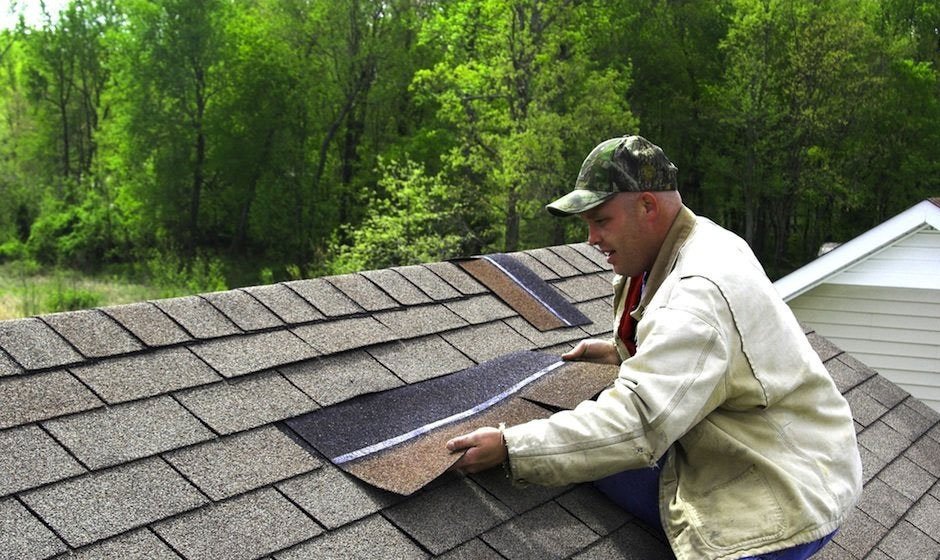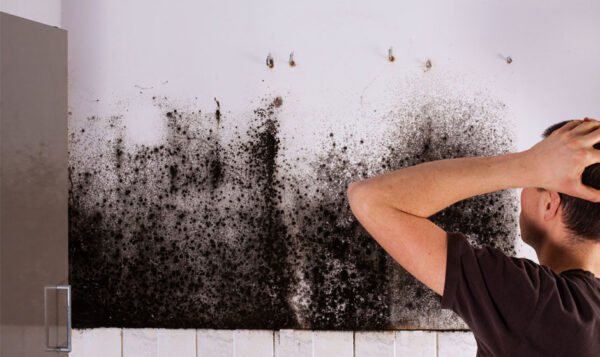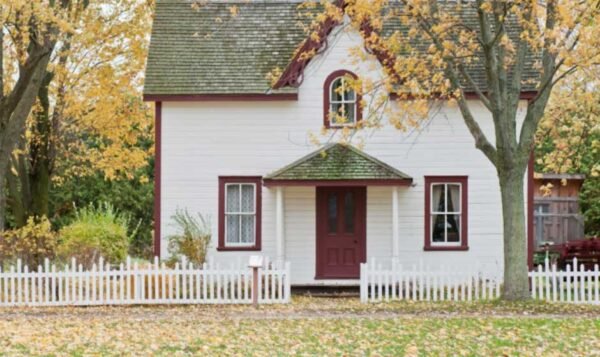Expert Advice: How to Successfully Re-Roof Your House with a Roof Replacement

A solid and well-maintained roof is essential for protecting your home from the elements. Over time, however, roofs can deteriorate and become less effective in providing this vital protection. This is why roof replacement is a crucial aspect of home maintenance. Re-roofing your house not only ensures the safety of your home and its occupants but also adds value and enhances its overall aesthetic appeal.
One of the primary reasons why roof replacement is essential is to prevent leaks and water damage. As a roof ages, it becomes more susceptible to leaks, which can lead to structural damage and mould growth. By replacing your roof tiles, you can prevent these issues and safeguard your home’s integrity.
Additionally, a new roof can significantly improve the energy efficiency of your home. Older roofs may lack proper insulation, causing heat to escape during the winter and enter during the summer, leading to increased energy consumption and higher utility bills. By choosing modern roofing materials and ensuring proper installation, you can enhance your home’s insulation and reduce your energy costs.
Signs That You Need a New Roof
Determining when it’s time to replace your roof is crucial in preventing further damage. Here are some signs that indicate it may be time for a roof replacement:
1. Age of the Roof
Most roofs have a lifespan of 20 to 25 years. If your roof is approaching or has exceeded this age, it is advisable to consider a replacement, even if there are no visible signs of damage. Older roofs are more prone to leaks and other issues.
2. Missing or Damaged Shingles
Inspect your roof regularly for missing or damaged shingles. Shingles that are cracked, curled, or blistered are a clear indication that your roof is deteriorating and needs attention. If you notice significant shingle damage, it is likely time for a roof replacement.
3. Leaks or Water Stains
Water stains on your ceilings or walls are a sign of roof leaks. If you notice any signs of water damage inside your home, it is crucial to address the issue promptly. Ignoring leaks can lead to more extensive damage and costly repairs.
4. Sagging Roof Deck
A sagging roof deck indicates a structural problem with your roof. This can occur due to excessive weight caused by multiple layers of shingles or moisture damage. If you notice any sagging, it is important to consult a professional to assess the condition of your roof.
By paying attention to these signs and promptly addressing them, you can avoid further damage to your home and ensure a successful roof replacement.
Choosing the Right Roofing Materials
Selecting the right roofing materials is a critical aspect of a successful roof replacement. The choice of materials depends on various factors, including your budget, climate, and the overall style of your home. Here are some popular roofing materials to consider:
1. Asphalt Shingles
Asphalt shingles are the most common roofing material due to their affordability and durability. They are available in a wide range of colours and styles, making them suitable for various architectural designs. Asphalt shingles are relatively easy to install and maintain, making them a popular choice among homeowners.
2. Metal Roofing
Metal roofs offer excellent longevity and durability. They are resistant to fire, insects, and rot, making them a low-maintenance option. Metal roofs are available in a variety of styles, including standing seam, corrugated, and metal tiles, allowing you to choose a design that complements your home’s aesthetics.
3. Slate or Tile Roofing
Slate and tile roofs are known for their elegance and longevity. They can last for over a century if properly maintained. These roofing materials offer excellent durability and are resistant to fire and pests. However, they are more expensive than other options and require professional installation due to their weight.
4. Wood Shingles or Shakes
Wood shingles or shakes provide a natural and rustic look to a home. They are environmentally friendly and offer good insulation. However, wood roofing requires regular maintenance to prevent rot and insect infestation. It is also important to check local building codes as some areas have restrictions on the use of wood roofing materials.
Consider consulting with a roofing professional to determine the best material for your specific needs and budget. They can guide you through the selection process and provide recommendations based on their expertise.
Preparing for the Roof Replacement Process
Before the roof replacement process begins, there are several steps you can take to ensure a smooth and successful project. Proper preparation is crucial in minimising disruption and ensuring the safety of the workers and your property. Here are some essential steps to follow:
1. Hire a Reputable Roofing Contractor
Start by finding a reputable roofing contractor with experience in roof replacement. Look for contractors who are licensed, insured, and have positive customer reviews. Request multiple quotes and compare their services and pricing. A professional contractor will guide you through the entire process and ensure the job is done to the highest standards.
2. Obtain the Necessary Permits
Depending on your location, you may need to obtain permits before starting the roof replacement project. Check with your local authorities to determine the specific requirements. Obtaining the necessary permits ensures that the project complies with building codes and regulations.
3. Clear the Work Area
Clear any obstacles around your home to provide easy access for the roofing crew. Move vehicles, outdoor furniture, and other items away from the work area to prevent any damage or accidents. Trim overhanging branches that could interfere with the roof replacement process.
4. Communicate with Your Neighbours
Notify your neighbours about the upcoming roof replacement project. Inform them about any potential noise or disruption during the construction process. Maintaining open communication can help prevent any misunderstandings and ensure a harmonious neighbourhood environment.
By following these preparation steps, you can set the stage for a successful roof replacement project. Proper planning and communication will contribute to a smooth and efficient process.
Steps Involved in Roof Replacement
Roof replacement involves several essential steps that must be followed to ensure a successful outcome. Each step plays a crucial role in the overall integrity and longevity of the new roof. Here is a breakdown of the main steps involved in the roof replacement process:
1. Roof Inspection
Before the actual replacement begins, a thorough roof inspection is conducted. This allows the roofing contractor to assess the condition of the existing roof, identify any underlying issues, and determine the scope of the replacement project. The inspection helps in planning and preparing for the upcoming work.
2. Removal of Old Roofing Materials
Once the inspection is complete, the old roofing materials need to be removed. This involves stripping off the shingles, underlayment, and any other existing layers. The removal process ensures a clean and stable surface for the installation of the new roof.
3. Repairing the Roof Deck
After the old materials are removed, the roof deck is thoroughly inspected for any damage. Any rotten or weakened sections of the deck are repaired or replaced to ensure a solid foundation for the new roof. This step is crucial in preventing future issues and ensuring the longevity of the replacement roof.
4. Installing Underlayment and Flashing
Once the deck is repaired, a layer of underlayment is installed. Underlayment acts as a moisture barrier and provides an extra layer of protection against leaks. Properly installed flashing is also essential in preventing water penetration around critical areas such as chimneys, skylights, and vents.
5. Installing New Roofing Materials
With the preparation work complete, it’s time to install the new roofing materials. Each material has its own installation requirements, and it is important to follow the manufacturer’s instructions and industry best practices. Proper installation ensures the durability and effectiveness of the new roof.
6. Clean-Up and Inspection
Once the new roof is installed, the work area is thoroughly cleaned up, and any debris is removed. A final inspection is conducted to ensure that the roof replacement meets the required standards. The inspection includes checking for proper installation, addressing any remaining issues, and ensuring the safety of the completed project.
By following these steps, you can ensure a successful roof replacement process. It is important to hire a professional roofing contractor who has the expertise and experience to perform each step with precision and quality.
Common Challenges During Roof Replacement
While roof replacement is a necessary and beneficial process, it can present some challenges. Being aware of these challenges can help you prepare and ensure a smooth project. Here are some common challenges that may arise during roof replacement:
1. Weather Conditions
Unpredictable weather can pose challenges during roof replacement. Rain, strong winds, or extreme temperatures can delay or interrupt the process. It is important to plan the project during a period of stable weather or work with a contractor who can adapt to changing conditions.
2. Dealing with Existing Damage
During the removal of old roofing materials, underlying damage may be discovered. This can include rotted wood, mould, or structural issues. Addressing these issues adds time and cost to the project. It is crucial to have a contingency plan and budget for any unexpected repairs.
3. Access to the Roof
Some homes have complex roof designs or limited access points, making it challenging for the roofing crew to navigate and work efficiently. Discuss any access issues with your roofing contractor beforehand to develop a plan for safe and effective work.
4. Disruption to Daily Life
Roof replacement can cause disruption to your daily routine. Noise, debris, and limited access to certain areas of your home are common during the construction process. Communicate with your contractor to minimise disruption and establish a timeline that works best for you.
By being aware of these challenges and working closely with your roofing contractor, you can mitigate potential issues and ensure a successful roof replacement project.
Maintaining Your New Roof
Once your new roof is installed, proper maintenance is crucial in prolonging its lifespan and preserving its appearance. Here are some essential maintenance tips for your new roof:
1. Regular Inspections
Schedule regular inspections to identify any potential issues before they become major problems. Inspect the roof for loose or damaged shingles, signs of leaks, and any debris that may have accumulated.
2. Clearing Debris
Remove any debris, such as leaves, branches, or dirt, from your roof regularly. Accumulated debris can trap moisture and cause damage to the shingles and underlayment. Use a roof rake or hire a professional to safely clear the roof.
3. Gutter Maintenance
Clean and inspect your gutters regularly to ensure they are free from debris and functioning properly. Clogged gutters can lead to water backup, which can damage the roof and cause leaks.
4. Trim Overhanging Branches
Trim any tree branches that overhang your roof. Overhanging branches can scrape and damage the shingles, and they can also provide easy access for pests to enter your home.
5. Prompt Repairs
Address any issues promptly to prevent further damage. If you notice loose or missing shingles, leaks, or signs of damage, contact a professional roofing contractor to assess and repair the problem.
By following these maintenance tips, you can extend the life of your new roof and keep it in optimal condition for years to come.
Conclusion
Roof replacement is an important investment in the safety, value, and appearance of your home. By recognizing the signs that indicate the need for a new roof and selecting the right roofing materials, you can ensure a successful replacement project. Proper preparation, choosing a reputable contractor, and following the necessary steps during the replacement process are key to achieving a durable and effective roof. By addressing common challenges and maintaining your new roof, you can enjoy the benefits of a secure and beautiful home for years to come.
Remember, a well-maintained roof provides peace of mind and protects your most valuable asset – your home.



